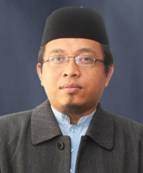| 个人简介 | |
|---|---|
 Prof. ABU ZAHRIM YASER UNIVERSITI MALAYSIA SABAH, Malaysia |
|
| 标题: Modelling and optimization of coagulation-flocculation process for coloured particles removal from wastewater | |
| 摘要: The global textile and apparel industry is among major sector in the world with China, India European Union, and United States being the major textile exporters. On the other hand, oil palm, commercially named as Elaeis quineensis Jacq., is one of the main agricultural crops in tropical countries, especially Malaysia and Indonesia being leaders. The main traded commodities are crude palm oil (CPO), crude palm kernel oil (CPKO) and palm kernel cake (PKC). The major CPO producing countries are Indonesia, Malaysia, and Thailand; other countries such as Colombia, Nigeria, Guatemala, Ecuador, Honduras, Papua New Guinea, Ghana, etc. are also contributing for crude palm oil. The similarity between textile and apparel and crude palm oil industries are that coloured effluents. The colour of textile industry effluent is due to synthetic dye while latter is due to lignin, tannin and other plant based colorants. Both industries produce coloured effluents in large quantities. The presence of residual coloured particles in surface water is aesthetically undesirable and causes annoyance to the aquatic biosphere due to reduction of sunlight penetration and depletion of the dissolved oxygen. Due to their toxic and recalcitrance properties, coloured particles can also contribute to the failure of biological processes in wastewater treatment plants. Further, the regulations imposed for the discharged coloured effluents have become more stringent and thus motivated the industries to improve their effluent decolourisation technology. Coagulation-flocculation is one of the most widely applied methods in decolourisation due to its low cost and easy operation, but the modeling and optimization of the process is critical to ensure higher performance. Khayet, Zahrim & Hilal (2011) reported statistical experimental design and response surface methodology, RSM, to optimize removal of C.I. Acid Black 210 dye from highly concentrated solutions by means of a coagulation/flocculation process. Central composite design (CCD) using as input variables the experimental temperature, the concentration of aluminium sulphate and the initial pH of the solution have been considered. The obtained optimal point corresponds to a temperature of 40 °C, a concentration of aluminium sulphate of 0.82 g/L and an initial pH value of 5.61. The maximal value of the dye removal obtained under optimal process conditions has been confirmed experimentally. In another study, Zahrim, Nasimah & Hilal (2015) stated that Response surface methodology (RSM) study indicated that strong interaction in the coagulation/flocculation of lignin occurred between the initial pH–polyDADMAC dosage, initial pH–calcium lactate dosage and polyDADMAC–calcium lactate dosage. The highest lignin removal achieved was between 50 and 68%. The removal behavior depended on the initial lignin concentration in the solution. The results showed that lignin removal from aqueous solution is possible in a single stage mixing tank by utilizing polyDADMAC–calcium lactate as a dual coagulant. Recently, Tamrin & Zahrim (2017) investigated multiple-objective optimisation on the basis of ratio analysis (MOORA) is employed to discretely measure multiple response characteristics of five different types of coagulants as a function of assessment value. This study highlights the simplicity of MOORA approach in handling various input and output parameters, and it may be useful in other wastewater treatment processes as well. | |
| 简介: Abu Zahrim Yaser is Head for Waste Management Committee and a senior lecturer at Chemical Engineering Programme, Universiti Malaysia Sabah (UMS). He obtained his PhD from Swansea University (UK), MSc from Universiti Kebangsaan Malaysia (Malaysia) and BEng from University of Malaya (Malaysia). Dr. Zahrim’s research mainly focuses on the integrated wastewater treatment and composting. He is a Guest Editor for Environmental Science and Pollution Research, Springer Publication. He has been receiving various funding from Malaysian government and international funder for the treatment of agro-based industries wastewater. To date, Dr. Zahrim has published 6 book chapters, 27 journals and 50++ other publications. He is a visiting scientist at the University of Hull for developing an advanced composting process (2015). He received Universiti Malaysia Sabah Excellent Service Award (2015). Dr. Zahrim is a member of Institutions of Chemical Engineers (United Kingdom), Board of Engineers (Malaysia) and Malaysia Water Association. | |
